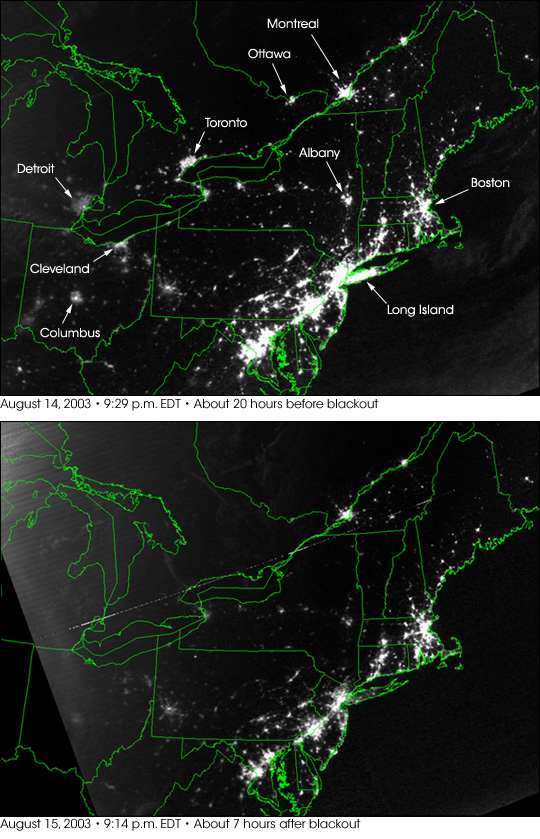


Editor's note: The dates of the images above may not be correct based on the context of the dates involved in the blackout. However, the images will not be updated as the data involved can no longer be confirmed. (May 4, 2018)
A power failure left many American cities in the dark on the evening of Thursday, Aug. 14, 2003. Authorities report there is no evidence of sabotage, although the cause of the blackout is not currently known. The North American Electric Reliability Council is currently focusing its investigation on the “Lake Erie loop”—a series of power transmission lines encircling the lake from Detroit to New York and into Canada. There is some evidence that the loss of a power line in Cleveland, Ohio, was the first in the series of events that led to the widespread power outage.
Authorities report that at around 4 p.m. the power flow on the northern side of the loop in Canada was moving from west to east. Then, for reasons not yet known, the power flow suddenly reversed direction and nearly doubled. The blackout began spreading rapidly across the grid with the sudden surge in power. Within minutes, computer programs in 21 different power stations across the region detected the cascading problem and automatically shut down to protect the power grid from damage.
Although power was restored to some local areas within hours after the blackout, several major cities were left without power overnight. The change in the nighttime city lights is apparent in this pair of DMSP satellite images. The top image was acquired on Aug. 14, about 20 hours before the blackout, and the bottom image shows the same area on Aug. 15, roughly 7 hours after the blackout. In the bottom scene, notice how the lights in Detroit, Cleveland, Columbus, Toronto, and Ottowa are either missing or visibly reduced. Long Island, New York, was also significantly affected; however, Boston was left relatively untouched.
Image courtesy Chris Elvidge, U.S. Air Force